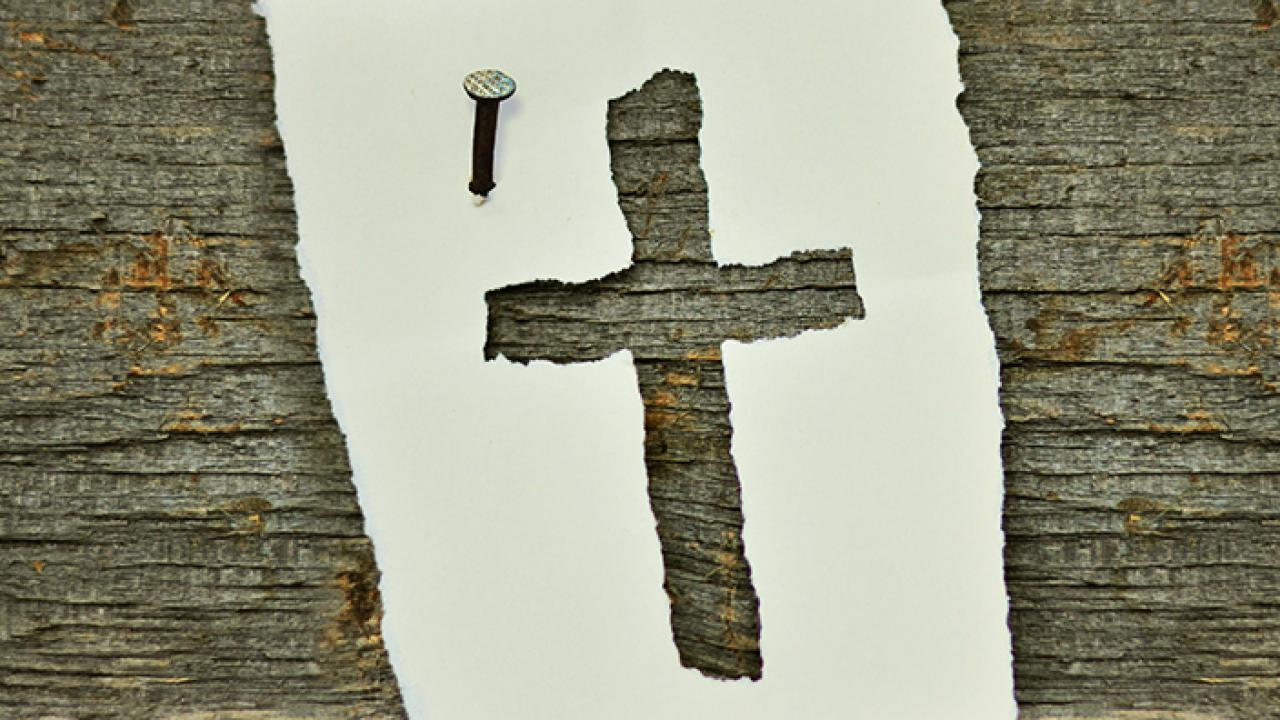Throughout history, the church has developed creeds such as the Nicene Creed that serve as a summaries of the story of salvation to both articulate and shape our faith. As we gather and speak the words of the creeds in worship, we express our personal participation in this shared faith while also reminding one another of the core content of that faith. The church also has a long history of using congregational singing to both articulate and shape our faith. What better way, then, to honor this 1700th anniversary of the Nicene Creed than to explore various ways in which it has been—or could be—set to music for congregational singing?
“Singing the Nicene Creed?” you ask. “In congregational worship?” you wonder. “In my church?” Certainly! Many strains of the Christian church regularly chant, and sing the text in corporate worship (often following the gospel reading as part of the Eucharistic celebration, or at funerals).
We would do well, however, to remember that this creed was written as an articulation and clarification of the orthodox Christian faith, largely in response to Arianism. It is not a poem, and it is not obviously structured in a musical form. So while the text lends itself easily enough to various types of chant, adapting it into other musical styles and genres can be challenging. Fortunately, many of our brothers and sisters have attempted to do just that, and I have enjoyed creating a limited survey of various settings available for congregational singing. I invite you to browse the options below and consider using one or two of them intermittently throughout worship this year. How might you encourage your congregation to join in singing the salvation story?
Singing the Full Text
“We All Believe in One True God” (WIR GLAUBEN ALL)
The arrangement for “We All Believe in One True God” was written by Martin Luther and first appeared in Walther’s Geistliches Gesangbüchlein in 1524. The text is a paraphrase of the Nicene Creed. To adapt the creed to a three-stanza structure, Luther expanded the sections on God the Father and Holy Spirit and condensed the section on God the Son. There are two tunes sung with Luther's lyrics. This melody itself is not Luther’s; it was written in 1743 by Johann Gottlieb Wagner and was published in the Manuskript Gesangbuch, Langenöls, 1748. This arrangement puts the text into metered-hymn form, thus, it sings quite like a traditional hymn. But be sure to alert your congregation of the rests. Nothing makes a singer shy faster than an inadvertent solo!
Liturgical and Musical Suggestions
- This song sings well with robust organ accompaniment. Be sure the tempo does not drag so the song can be sung confidently and in full voice.
- The second line exactly echoes the first, and the fourth line exactly echoes the third. To help teach your congregation, consider using a soloist to sing the first and third lines, asking the congregation to sing along on the second, fourth, and fifth lines.
- If the rests are tripping up your congregation, consider playing a low B-flat on organ or piano to fill the space on beat one.
For an alternate arrangement with the same text see the second setting on hymnary, an adaptation of medieval chant.
“Ninasadiki/I Believe in God the Almighty”
The background for this delightful song based on the Nicene Creed is scant. It was written by Sam Ochieng Okeyo as a part of the Misa Kariobangi. This mass—written entirely by Okeyo—is reported to be well-known and often sung throughout Kenya. “I Believe in God” is written as a call and response, with a leader singing a phrase (in this case, a statement rooted in the creed) and the congregation singing back a shared statement of faith (in this case, the Swahili word ninasadiki, which means “I believe”). Like Luther, Okeyo did not include all parts of the creed, but the song’s structure and repetition make this a wonderfully approachable setting for many congregations.
Liturgical and Musical Suggestions
- The “Leader” section can be led by a strong single voice, a small group of voices, an alternation of solo voices, or even a children’s or youth choir. All voices in the worship space should sing together on the ninasadiki responses.
- The congregation has two melody refrains that alternate throughout the song. Consider teaching them to the congregation before leading the entire song.
- Much of the song’s energy is rooted in its rhythm. Consider using hand percussion instruments (shakers, djembe, tambourine, or caxixi) to help keep the rhythm and infuse the song with energy. Also consider inviting some young children to play them loudly (if not rhythmically!) during the shared
ninasadiki responses. - Feel free to use a piano or other instrument to assist your congregation as they learn, but work toward singing this a cappella if possible.
“The Nicene Creed” (DRAESEL)
Music for this song can be found in The Psalter Hymnal © 1987, Christian Reformed Church in North America #520 or through the Hal Leonard choral company.
Written by Herbert G. Draesel, Jr., this setting of the Nicene Creed arose as part of a post-Vatican II movement to set the creed and other texts in what was the style of that era. This setting first appeared in Draesel’s 1964 folk mass titled Rejoice. Draesel’s setting helpfully renders the text word-for-word (depending on which translation you use), though he does use the first-person singular pronoun “I believe” instead of the first-person plural “We believe.” (See the sidebar in "The Nicene Creed at 1700 Years") The melody meanders a bit, giving the setting a chant-like feel and leaving the singer with the sense that Draesel wisely allowed the text to lead the music. As you sing through the creedal sections on Christ’s incarnation, crucifixion, and burial, you will notice some effective word painting as the often-minor harmonizations bring those sections to life.
Liturgical and Musical Suggestions
- Draesel wrote this setting to be performed by a youth choir accompanied by an acoustic guitar. If you choose to lead it this way, consider doubling the melody with a piano or other lead instrument to assist your congregants as they sing. If you lead it with an organ or piano, consider asking a soloist or small group of voices to help lead.
- The tempo markings at “Who for us and our salvation” and “and the third day he rose again” are Draesel’s own suggestions. They slow down the song, allowing for deeper meditation on the acts of the incarnate Christ.
- Once the song is learned, consider rising as a congregation at “and the third day he rose again” to help embody Christ’s resurrection and to “lift” the song a bit. Remain standing through the end.
Modified Chant
If none of these musical settings of the Nicene Creed feel right for your congregation, consider setting it yourself in a modified chant—speaking the creed and having the congregation join in on a refrain. The creed can be split into three sections: God the Father, God the Son, and God the Holy Spirit. Consider having a leader read each of these sections, and punctuate each section with a robust congregational singing of “We believe!”
“Lord, We Believe”
This setting (see print or digital library p. 36) provides a congregational refrain and a tone for playing behind the reading. The simple refrain is written for unison voices on the melody. The tone can be vamped by a piano, a lightly textured organ, or a small team of musicians. Be sure to practice with your reader on the timing of the readings and how they sit overtop of the tone progressions. Ideally, your reader would also be able to help lead the sung refrains (at least while the congregation is still learning them).
“This Is Our God”
An arrangement for piano and congregation is found in the print and digital library p. 37, while additional lead sheets and audio recordings are available at sovereigngracemusic.com/music/songs/this-is-our-god.
Written by Sovereign Grace, this creed-inspired song may well be one your congregation would sing, but you might consider using the chorus as a congregational refrain following the reading of each section of the creed and not use the stanzas. The chord structure of the intro (the first eight measures) works well for a quiet piano or full-band vamp behind the reading, and it moves nicely into the II chord that starts the refrain. As recorded by Sovereign Grace, the song has a straightforward drive, but feel free to slow down the tempo and allow the chorus to breathe if used in this way.


